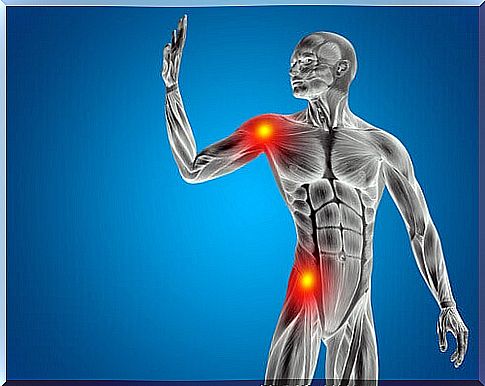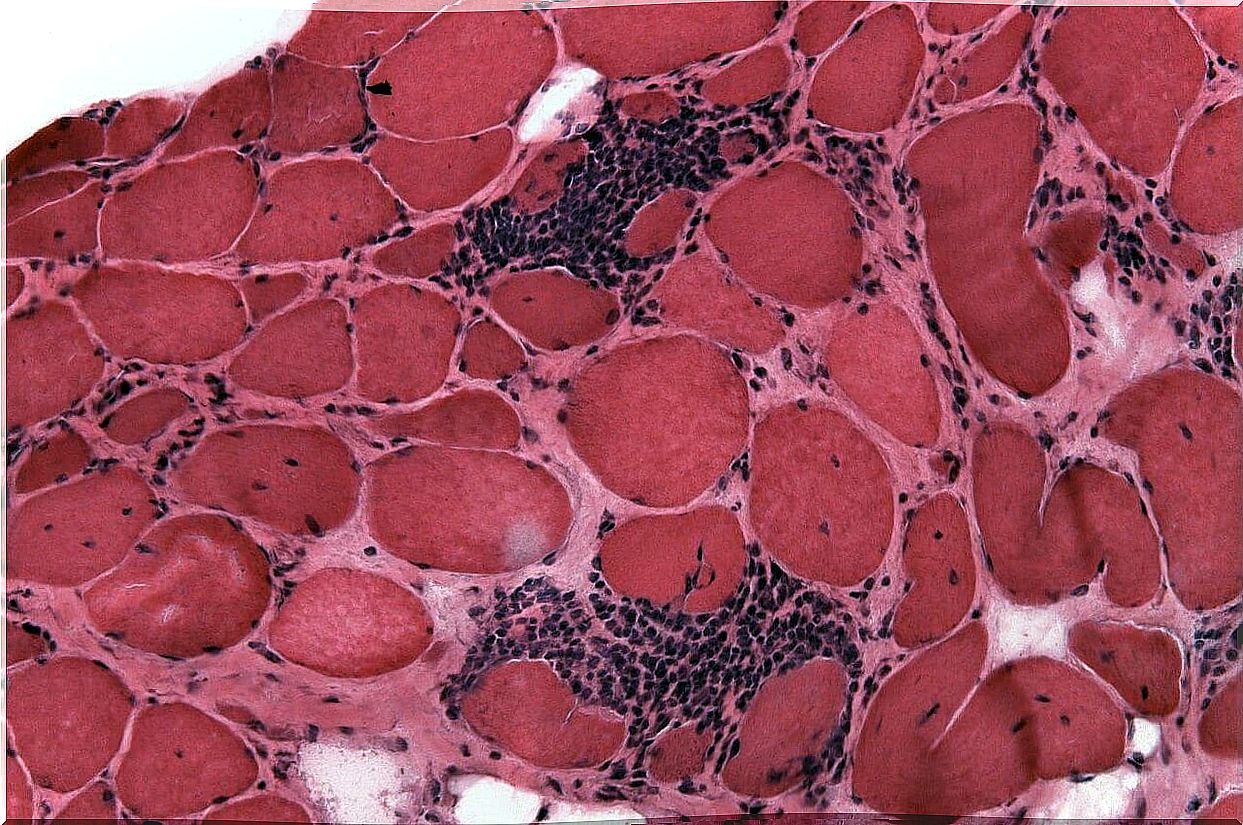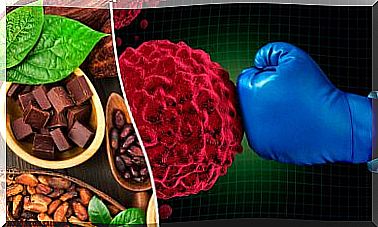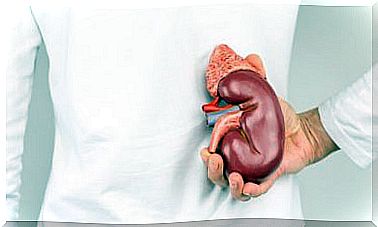Polymyositis: Causes And Symptoms
Polymyositis is a rare systemic rheumatic disease characterized by a degenerative inflammatory process in the muscles.
It is classified as a rheumatic disease, since it affects the musculoskeletal system and is autoimmune in nature.
Although it can develop at any age, this disease is more common in men who are near the age of fifty. Also, children who are between 5 and 15 years old can suffer it.
Etiology of polymyositis
The exact cause of this disease is unknown. However, being an autoimmune reaction, we know that the probability of suffering it increases in a genetically susceptible individual. What do we mean when we talk about a genetically susceptible individual?
To understand this, we first have to talk about the human leukocyte antigen (HLA) system. This is also known as the major histocompatibility complex and refers to the genes that code for these antigens (MHC).

The HLA system
The HLA system is basically a set of molecules that are found on the surface of practically all tissues of the human body and that constitute antigenic regions. The function of this system is to distinguish between what is one’s own and what is foreign.
Each individual has a unique HLA made up of the combination of a set of molecules.
When we speak of genetically susceptible individuals, we refer to those whose HLA consists of at least one subtype of antigen, which predisposes the individual to suffer from autoimmune diseases. These subtypes are: DR3, DR52 and DR6.
This does not imply that individuals whose HLA is made up of any of these antigenic subtypes will suffer from an autoimmune disease. For this to happen , a triggering phenomenon must take place, which can be:
- A viral myositis (muscle inflammation due to a viral infection).
- An underlying cancer.
- Among others.
Despite all this, the exact type of virus that triggers polymyositis is unknown.
Pathophysiology
The pathophysiology of polymyositis has aspects common to any other autoimmune disease, including muscle atrophy and cell damage.

These conditions are a consequence of the muscle cells becoming the target of the immune system, which, thanks to the release of certain substances, manages to kill them.
This release of substances triggers an inflammatory process, the severity of which is directly proportional to the severity of the autoimmune disease.
It usually affects all the muscles in the body. However, the muscles of the most distal part of the extremities and the muscles of the face seem to be the least affected.
If not treated properly, the affection of the muscles of the esophagus, the pharynx or the heart can compromise the function of these organs, with which it can trigger fatal consequences for the individual.
Symptoms of polymyositis
The symptoms of this disease can appear in a short period of time. This is the most common case in children. It can also appear gradually.
The most characteristic symptom is joint and muscle pain, characteristic of inflammatory diseases. However, others usually appear:
- Muscle weakness : it is a direct consequence and becomes more evident when the immune system has destroyed almost half of the individual’s muscle fibers, that is, it is a characteristic symptom of advanced polymyositis.
- Stop walking : in the most severe cases the patient may be forced to use a wheelchair or always remain in bed rest. Especially if the neck muscles have been affected to such an extent that the patient is unable to support his own head.
- Mild pain : it is a characteristic symptom, but very annoying because they are continuous. It is estimated that one third of individuals with polymyositis have significant joint pain. Generally, the individual is forced to take analgesics and anti-inflammatories in order to lead a normal life.
- Joint pain: known as polyarthralgias, when they occur in more than five joints, they are a direct consequence of the surrounding inflammatory process.
As we have seen, polymyositis can affect our quality of life. Therefore, if we detect any of the aforementioned symptoms, we must put ourselves in the hands of a professional as soon as possible.









